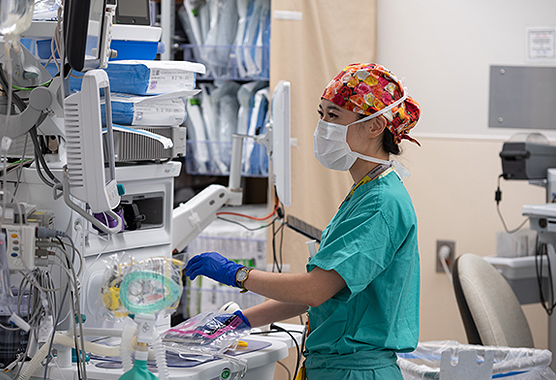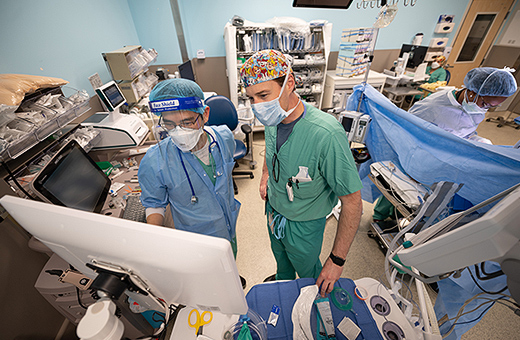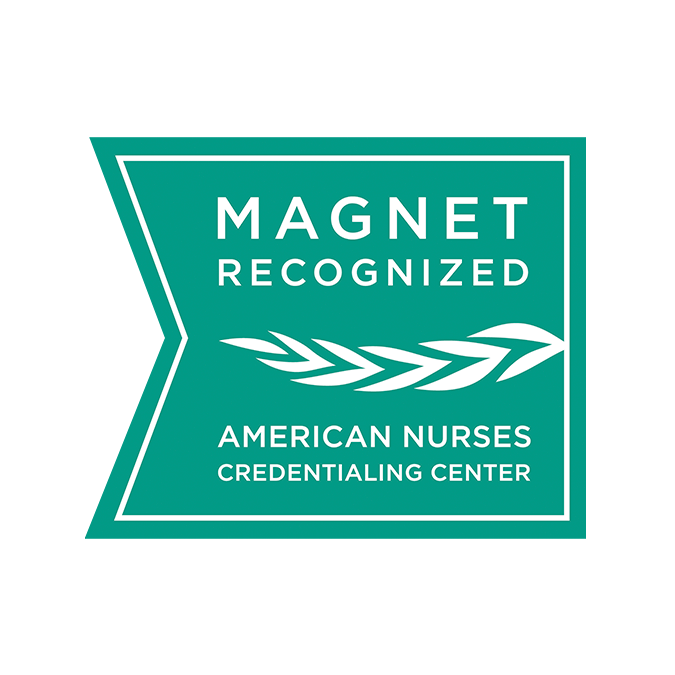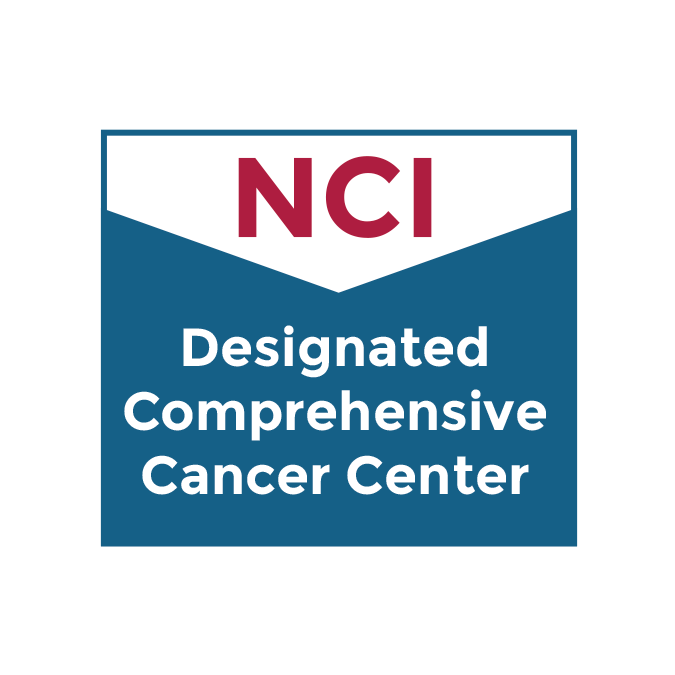Regional Anesthesia
We offer pain control during all types of surgery to keep you comfortable while reducing post-operative side effects.
Medically reviewed by Stephen Macres, M.D. on Nov. 17, 2023.

Highly Trained Specialists in Regional Anesthesia
Our team at UC Davis Health Anesthesiology and Pain Medicine can determine the most effective type of regional anesthesia for you to give you the best possible outcome.
What is Regional Anesthesia?
Regional anesthesia (pain relief) focuses on one particular site in your body. It blocks pain in specific body parts, such as your arms, legs, abdomen and chest wall, during surgery.
During regional anesthesia, your provider will offer medication to help you relax (sedative) so that you are completely comfortable. Occasionally, you will receive a general anesthetic, which makes you temporarily unconscious, in combination with your regional anesthesia.
Regional anesthesia can reduce pain after surgery and shorten recovery time compared to using general anesthesia. It can be an alternative to opioids or used in combination with opioids. When providers use anesthesia and opioids together, you need less opioid medication to control your pain. A lower dose reduces your risk of opioid-related side effects.
Types of Regional Anesthesia
At UC Davis Health, we offer the highest level of care throughout your surgery. We aim to minimize discomfort and keep you as comfortable as possible during your procedure.
Epidural Anesthesia
We typically use an epidural during labor and delivery of a child, as well as during and after other surgeries. We inject a medication that reduces sensation (local anesthetic) into your lower back. Then we insert a small tube (epidural catheter) to deliver a continuous infusion of medication.
Peripheral Nerve Blocks
We may administer a peripheral nerve block for surgeries on your upper and lower extremities, trunk (abdomen and chest) and major joints (hip, knee, shoulder or ankle). We inject medication near a nerve, which blocks pain in the part of your body connected to that nerve. We provide a regional anesthetic for pain relief following rib fractures, hip fractures and acute burn injuries.
Spinal Anesthesia
We use spinal anesthesia (spinal blocks) for surgery below your waist, including Cesarean sections, gynecologic surgery, orthopaedic surgery, urologic surgery and vascular surgery. We inject medication into the fluid near your spinal cord, which numbs the bottom part of your body.
Before you have regional anesthesia, your anesthesiologist will talk to you about what to expect and how to prepare. It’s important to follow their instructions before, during and after anesthesia to ensure the best outcome.
-

Before Regional Anesthesia
Your stomach should be empty before the surgery. Our providers will let you know when you should stop eating and drinking. You will usually be allowed clear liquids up until 2 hours before. We routinely use ultrasound to help guide placement of your nerve block.
-

During Regional Anesthesia
We administer regional anesthetic through a needle or catheter. During the procedure, you will be appropriately sedated so that you are comfortable but responsive to your doctors and nurses. Every attempt is made to make this a comfortable and relatively pain-free experience.
-

After Regional Anesthesia
After regional anesthesia, you will rest in a recovery room until your anesthesia wears off. Your anesthesiologist and provider will give you specific recovery instructions. When you’re ready to go home, you will need a friend or family member to drive you.
Home Care After Regional Anesthesia
When you arrive home after regional anesthesia, you will want to take it easy. Anesthetic medications can remain in your system for up to 24 hours. Try to relax and limit your activity until you feel better.
Protect Your Body
Following a peripheral nerve block, it is important to protect any part of your body that has been anesthetized. If you got a peripheral nerve block of your lower body, avoid putting weight on that limb so you don’t accidentally fall.
Avoid Driving, Lifting and Alcohol
Don’t drive or lift heavy items or equipment for at least 24 hours after returning home. This gives your body a chance to recover from your procedure. You should also avoid drinking alcohol after anesthesia. Alcohol may increase your risk of complications and weaken your immune system.
Pain Relief
If you had an epidural catheter, we may leave it in for several days for continued pain relief. Occasionally, we may send you home with a continuous catheter nerve block, which delivers pain relief to a certain part of your body. You are allowed to discontinue this catheter at home. Your providers will give you specific instructions before you get discharged.
When to Contact Your Provider
Contact your provider as soon as possible if you notice symptoms including bladder or bowel control issues; continued weakness or numbness; itching, swelling, pus or bleeding at the procedure site; excessive pain; signs of infection, such as chills or fever; trouble breathing or swallowing; or worsening back pain or headache.
"Regional anaesthesia and outcomes," NIH, https://www.ncbi.nlm.nih.gov/pmc/articles/PMC7807931/

Ranked among the nation’s best hospitals
A U.S. News & World Report best hospital in cardiology, heart & vascular surgery, diabetes & endocrinology, ENT, geriatrics, neurology & neurosurgery, and pulmonology & lung surgery.

Ranked among the nation’s best children’s hospitals
U.S. News & World Report ranked UC Davis Children’s Hospital among the best in pediatric nephrology, orthopedics*, and pulmonology & lung surgery. (*Together with Shriners Children’s Northern California)

Ranked Sacramento’s #1 hospital
Ranked Sacramento’s #1 hospital by U.S. News, and high-performing in aortic valve surgery, back surgery (spinal fusion), COPD, colon cancer surgery, diabetes, gynecological cancer surgery, heart arrhythmia, heart failure, kidney failure, leukemia, lymphoma & myeloma, lung cancer surgery, pacemaker implantation, pneumonia, prostate cancer surgery, stroke, TAVR, cancer, orthopedics, gastroenterology & GI surgery, and urology.

The nation’s highest nursing honor
UC Davis Medical Center has received Magnet® recognition, the nation’s highest honor for nursing excellence.

World-class cancer care
One of ~59 U.S. cancer centers designated “comprehensive” by the National Cancer Institute.

A leader in health care equality
For the 13th consecutive year, UC Davis Medical Center has been recognized as an LGBTQ+ Healthcare Equality Leader by the educational arm of America’s largest civil rights organization.
